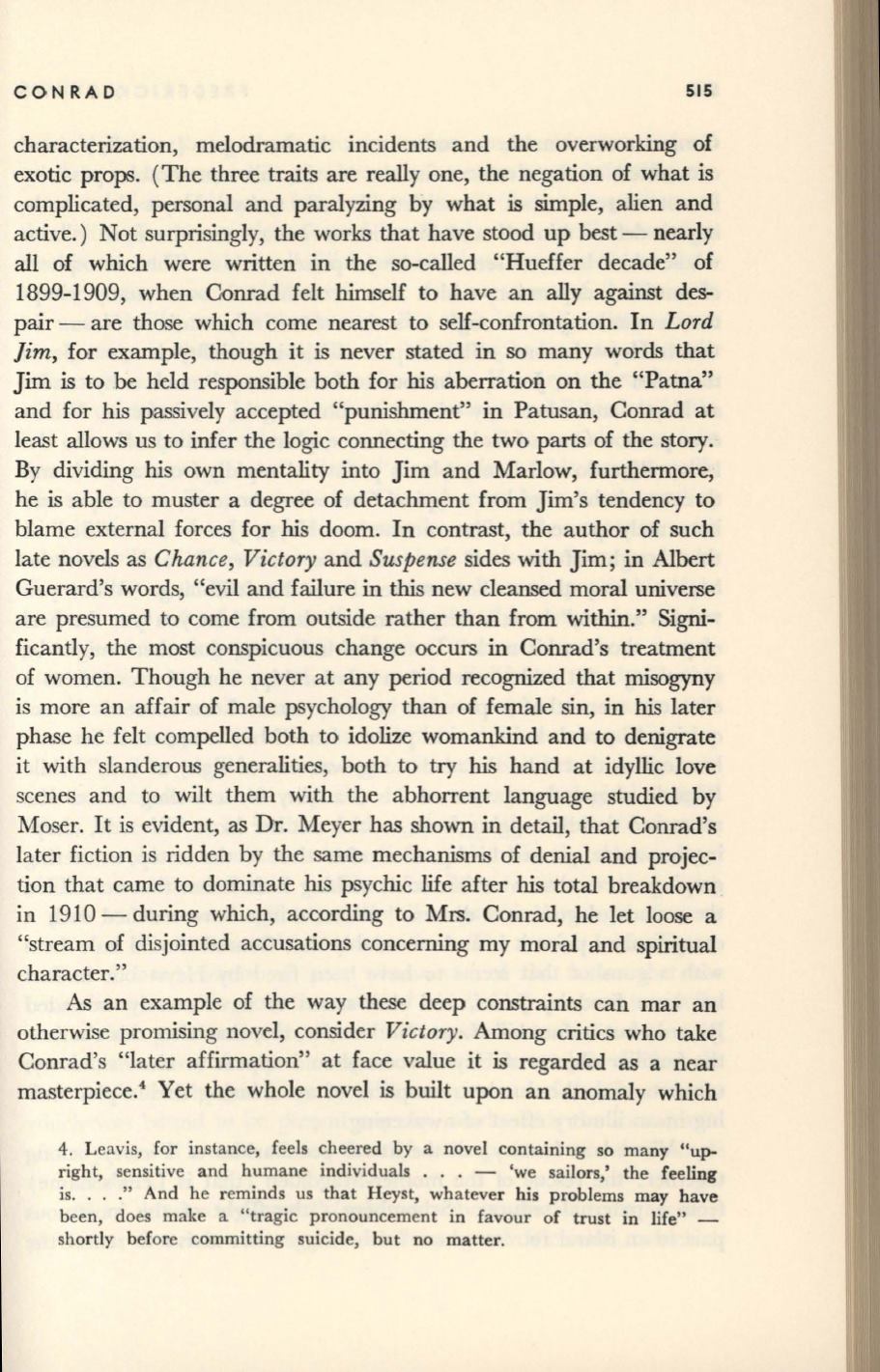
CONRAD
515
characterization, melodramatic incidents and the overworking of
exotic props. (The three traits are really one, the negation of what is
complicated, personal and paralyzing by what
is
simple, alien and
active.) Not surprisingly, the works that have stood up best - nearly
all of which were written in the so-called "Hueffer decade" of
1899-1909, when Conrad felt himself to have an ally against des–
pair - are those which come nearest to self-confrontation. In
Lord
Jim,
for example, though it is never stated in so many words that
Jim
is
to be held responsible both for his aberration on the "Patna"
and for his passively accepted "punishment" in Patusan, Conrad at
least allows us to infer the logic connecting the two parts of the story.
By dividing his own mentality into Jim and Marlow, furthermore,
he
is
able to muster a degree of detachment from jim's tendency to
blame external forces for his doom. In contrast, the author of such
late novels as
Chance, Victory
and
Suspense
sides with Jim; in Albert
Guerard's words, "evil and failure in this new cleansed moral universe
are presumed to come from outside rather than from within." Signi–
ficantly, the most conspicuous change occurs in Conrad's treatment
of women. Though he never at any period recognized that misogyny
is more an affair of male psychology than of female sin, in his later
phase he felt compelled both to idolize womankind and to denigrate
it with slanderous generalities, both to
try
his hand at idyllic love
scenes and to wilt them with the abhorrent language studied by
Moser.
It
is evident, as Dr. Meyer has shown in detail, that Conrad's
later fiction is ridden by the same mechanisms of denial and projec–
tion that came to dominate his psychic life after his total breakdown
in 1910 - during which, according to Mrs. Conrad, he let loose a
"stream of disjointed accusations concerning my moral and spiritual
character."
As
an example of the way these deep constraints can mar an
otherwise promising novel, consider
Victory.
Among critics who take
Conrad's "later affirmation" at face value it
is
regarded as a near
masterpiece.
4
Yet the whole novel is built upon an anomaly which
4. Leavis, for instance, feels cheered by a novel containing so many "up–
right, sensitive and humane individuals . . . - 'we sailors,' the feeling
is. . .." And he r eminds us that Heyst, wha tever his problems may have
been, does make a " tragic pronouncement in favour of trust in life" _
shortly before committing suicide, but no matter.


